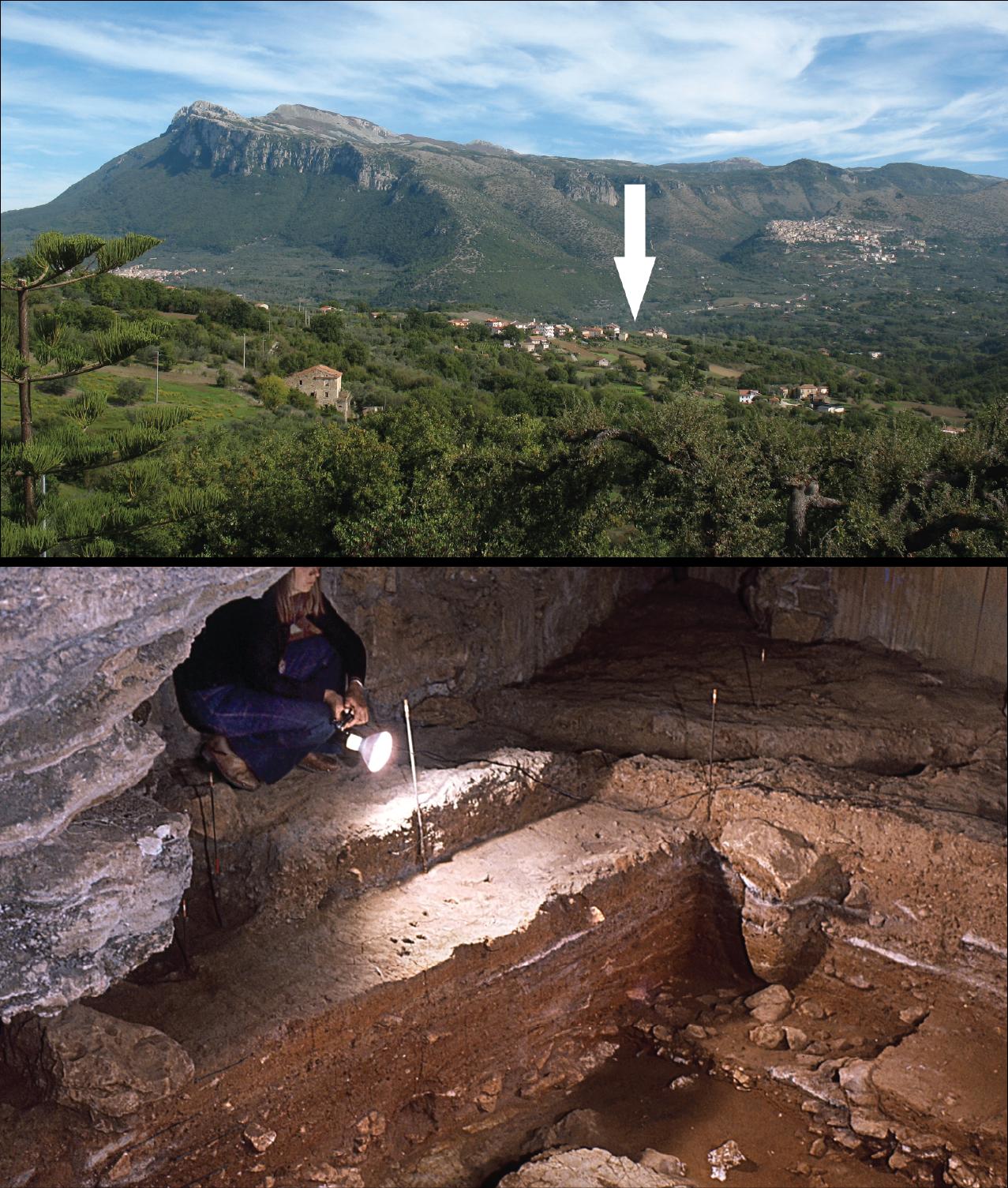attempto online
10.06.2024
Ancient volcanic eruption not key to early Homo sapiens cultural innovations
New research questions the impact of the major eruption of the Phlegraean Fields 40,000 years ago on the behavioral development of the early Homo sapiens societies in Europe
An international team of researchers from the Universities of Tübingen (Dr. Armando Falcucci), Siena, and Bologna analyzed the cultural remains left by groups of early Homo sapiens at Grotta di Castelcivita in southern Italy, dating back to before the major eruption known as the Campanian Ignimbrite. This explosive event, originating in the still-active Phlegraean Fields about 40,000 years ago, is considered the most powerful volcanic eruption ever recorded in the Mediterranean. Crucially, Grotta di Castelcivita is one of the rare archaeological sites where volcanic ash has sealed a high-resolution archaeological sequence.
By employing a set of cutting-edge methodologies to meticulously reconstruct the methods used in crafting stone tools – the most enduring artifacts unearthed in prehistoric excavations – the researchers demonstrated that cultural development at Castelcivita predates both the deposition of the volcanic layers and the sub-contemporaneous cold climate phase known as Heinrich Stadial 4, which lasted for about two millennia. The most remarkable cultural innovation recorded at the site is the production of miniaturized stone points from rocks collected near the cave with the most suitable fracture properties. These micro-tools were likely intended to be hafted into multi-component projectile weapons.
This discovery challenges long-held speculations that natural disasters, such as volcanic eruptions and cooling events, were crucial drivers of major changes in the lifeways of hunter-gatherers throughout human prehistory. The new study, published in Scientific Reports, hypothesizes instead that cultural innovations among early Homo sapiens originated from mechanisms of cultural transmission and the establishment of large-scale networks that extended beyond the Alps. Overall, this research represents a significant step towards understanding how Upper Paleolithic hunter-gatherer societies developed sophisticated strategies to thrive in changing environments.
Grotta di Castelcivita is one of the most important prehistoric deposits in Europe, containing a high-resolution stratigraphic sequence with evidence for the replacement of Neanderthals by early Homo sapiens groups about 43,000 years ago. Excavations and research at this site are conducted with permission from the Italian Ministry of Culture by the Research Unit of Prehistory and Anthropology, Department of Physical Sciences, Earth, and Environment at the University of Siena, under the direction of Adriana Moroni.
Dr. Armando Falcucci, Department of Geosciences, Prehistory and Archaeological Sciences Research Unit
Published paper:
Falcucci A., Arrighi S., Spagnolo V., Rossini M., Higgins O.A., Muttillo B., Martini I., Crezzini J., Boschin F., Ronchitelli A. & Moroni A. (2024) A pre-Campanian Ignimbrite techno-cultural shift in the Aurignacian sequence of Grotta di Castelcivita, southern Italy. Scientific Reports, 14: 12783. https://doi.org/10.1038/s41598-024-59896-6
Contacts:
Dr. Armando Falcucci
University of Tübingen
Department of Geosciences
Prehistory and Archaeological Sciences Research Unit
armando.falcuccispam prevention@uni-tuebingen.de
Dr. Adriana Moroni
University of Siena
Department of Physical Sciences, Earth, and Environment
Research Unit of Prehistory and Anthropology
adriana.moronispam prevention@unisi.it

